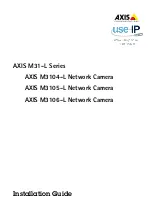
8-10
DHCP Server Operation
Date
should be the date on which all assigned BOOTP leases will end. The
date is specified in the form
W YYYY/MM/DD HH:MM:SS
W is the day of the week expressed as a number from zero (Sunday) to six
(Saturday). YYYY is the year, including the century. MM is the month
expressed as a number from 1 to 12. DD is the day of the month, counting
from 1. HH is the hour, from zero to 23. MM is the minute and SS is the
second. The time is assumed to be in Greenwich Mean Time (GMT), not
local time.
If the system upon which DHCP will be operating does not support a
real-time clock, then care should be taken to specify a date which is 1,
January, 1970 (i.e. start of UNIX time) offset by the required BOOTP lease
duration. Clients and server(s) must agree on a common time and date
(even if just from start of UNIX time), otherwise this will not work correctly.
If clients and servers cannot be guaranteed to share a common notion of
time and date, use
dynamic-bootp-lease-length
instead.
dynamic-bootp-lease-length
dynamic-bootp-lease-length
lengt
h;
The
dynamic-bootp-lease-length
statement is used to set the length of leases
dynamically assigned to BOOTP clients. At some sites, it may be possible to
assume that a lease is no longer in use if its holder has not used BOOTP or
DHCP to get its address within a certain time period. The period is
specified in
length
as a number of seconds. If a client reboots using BOOTP
during the timeout period, the lease duration is reset to
lengt
h, so a BOOTP
client that boots frequently enough will never lose its lease. Needless to say,
this parameter should be adjusted with extreme caution.
use-host-decl-names
use-host-decl-names flag;
If the
use-host-decl-names
parameter is true in a given scope, then for every
host declaration within that scope, the name provided for the host
declaration will be supplied to the client as its hostname. For example:
group {
use-host-decl-names on;
host joe {
hardware ethernet 08:00:2b:4c:29:32;
fixed-address joe.fugue.com;
}
}
Summary of Contents for Bridge/ Heritage
Page 15: ...1 10 Introduction ...
Page 31: ...2 16 Installing and Configuring your xDSL Router ...
Page 43: ...3 12 Basic Configurations ...
Page 59: ...4 14 Advanced Configurations ...
Page 63: ...5 4 Managing the xDSL Router ...
Page 65: ...6 2 xDSL Link Performance Statistics ...
Page 123: ...7 58 Command Sets for Command Line Interface ...
Page 141: ...8 18 DHCP Server Operation ...
Page 149: ...9 8 DHCP Client Configuration ...
















































